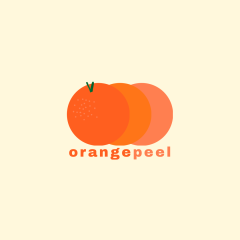Luana Góes is an artist from Brazil whose “dear memory” is featured on the cover of orangepeel‘s seventh issue, Preserved. Her work can also be found in our third issue, Take A Slice & Stay A While.
op: Could you give us a quick introduction to yourself?
lg: My name is Luana Góes, I’m a 21 year old mixed media artist based in the Amazon region of Brazil. I love using different mediums like oil pastels, watercolors, acrylics and collages to create unique mixed media pieces. Although my first love is traditional art, I also like to explore digital ways to create art or edit. Besides visual art, I also take an interest in design, video editing, and music. I love being a part of projects and creating or collaborating with friends.
op: How long have you been an artist?
lg: I’ve been interested in art ever since I was a kid. I liked art classes when I was younger and in high school I spent time in the classroom drawing on my notebook and filling entire pages. I only started dedicating more time to it, however, when I was about 16. That’s when I got my first paints and when I started exploring different mediums. Mental health shaped a lot of the art I did back then. I learned how to use the scanner of the old printer in my house, and decided to create an account to share my art and connect with other people. I’m forever grateful for the friends I’ve made and the projects I’ve participated in. I’ve come a long way since and my art style has developed a lot, but it’s all a constant state of change and evolving.
op: Congratulations on being our cover artist for this issue! What’s the story behind “dear memory”?
lg: Thank you for having me! “dear memory” is a piece that was born after my trip to Recife, Brazil, a city I had never visited. My best friend is studying there at university, and me and my twin sister went to visit her and spent such a great week there. I did so much art on this trip and when I got home I still felt inspired to do more. I remember a moment when we went to have breakfast in this cute place, and it had huge windows and I could see the buildings and the sky. The drawing is inspired by the memory of that day. I actually wrote “dear,” as the first thing in the paper, but later covered it with blue oil pastels so it’s not that visible. But you can see it if you look for it!
op: This is the second time you’re featured in orangepeel, the first being your collage “o café tá pronto?” in our third issue. “dear memory,” however, is a pastel drawing. What is your favorite medium to work in?
lg: My favorite medium depends a lot on what I’m feeling and on what my intent is with the piece. I find oil pastels to be very expressive so I use it a lot in my sketchbook or when I have a specific feeling I wanna translate to paper. Watercolors are quick, so I use them for doodles or painting from life. I carry my watercolor set with me on trips, for example. Acrylics and collages I usually use for full pieces, so that takes more planning and thumbnailing. In the end, I end up using it all in a singular piece sometimes. But I have to say, it’s all about feeling and experimenting. My favorite medium is ultimately linked to traditional art. Even though I also like digital, traditional comes easier to me when it comes to creating texture, which is something I value a lot in my art.
op: Lastly, what are three things you want us to know about you or your work?
lg: 1. Art should be enjoyed. I try not to take myself too seriously. Creating is fun and I’m grateful to be able to do it.
2. In the future, I wanna explore more art inspired by my region and heritage.
3. I love creating random zines or projects with friends. My most recent passion project is a website where I will be posting interviews with my friends through a flipbook/zine, and the first interview is out! You can read it at spotlightproject.vercel.app, and you can keep in touch with me through instagram (@luana.g.m) or twitter (@wxarpaint).










